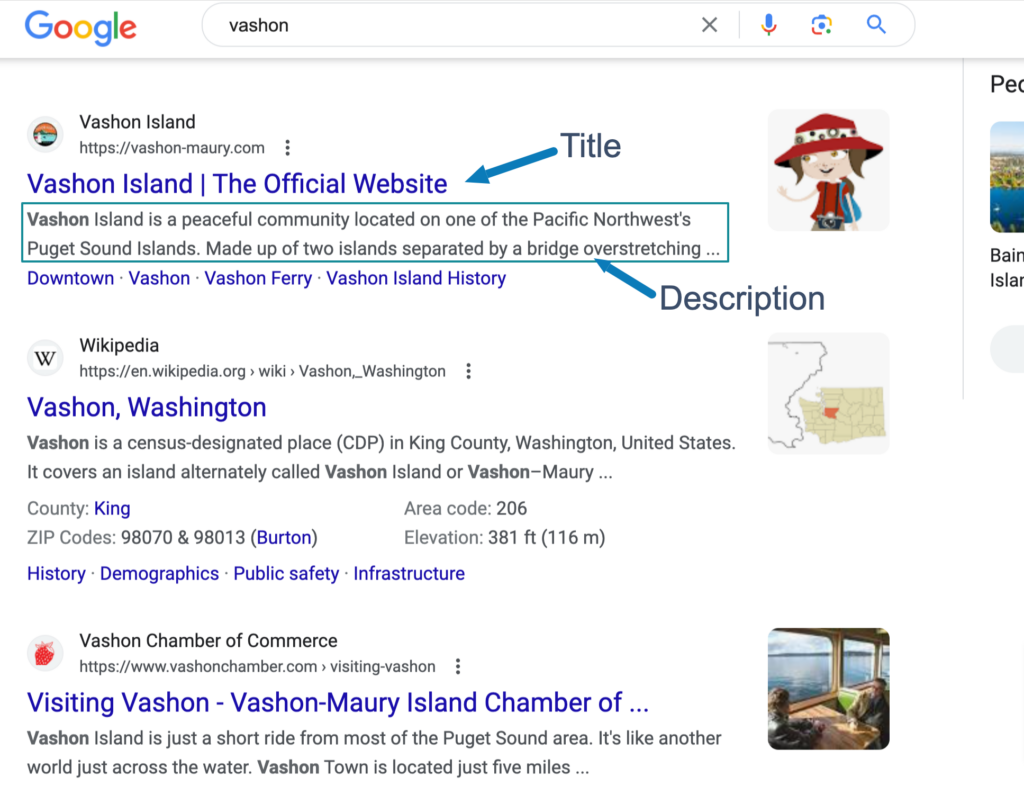In the vast realm of the internet, where websites vie for attention and visibility, three legendary meta tags emerged as key players in the world of SEO (Search Engine Optimization). These tags, known as the Title, Description, and Keyword tags, held immense power and significance in the quest for higher rankings on search engine results pages (SERPs).


Like a regal crown, the title tag adorned each webpage with its captivating presence. But remember, the title tag is not a meta tag, though it is often referred to as one. It stood as the initial point of contact for both search engines and users, offering a concise and compelling summary of the page’s purpose. Much like the title of a captivating book, it had to grab attention, evoke curiosity, and provide a glimpse into the content within.

As the search engine wizards delved deeper into their quest for information, they yearned for more than just a title. And thus, the Description tag emerged, akin to the enticing blurb on the back cover of a book. This tag provided a brief but alluring overview of what awaited the curious reader. Its purpose was to entice, to persuade users to take the next step and venture further into the enchanted realms of the website.

The Description
In the early days, the Description tag became a playground for cunning website owners, who attempted to sway the search engine overlords with a barrage of keywords. However, the wise search engine deities recognized this abuse and imposed stricter rules. The Description tag was required to be concise, relevant, and reflective of the actual content found on the page. The days of keyword stuffing were banished, replaced by a focus on genuine and informative descriptions.

The Defunkt Keyword Tag
Let’s focus on the mischievous Keyword tag, once a formidable force. It functioned as a secret spellbook, allowing website owners to list the keywords they desired to rank for. Yet, as the tale unfolded, the search engine gods witnessed its manipulation and exploitation. It became a battlefield of spammy tactics, where websites stuffed irrelevant keywords in an attempt to deceive search engines. In response, the search engine gods devalued the Keyword tag, relegating it to irrelevance.
As the story progressed, search engines evolved, becoming more sophisticated in assessing website value. The focus shifted from relying solely on meta tags to a holistic analysis of content, user experience, and quality of backlinks. While the meta tags retained their importance, they were no longer the sole protagonists in the SEO quest. Nonetheless, they continued to provide concise information, guiding search engines and users on their digital journeys.

And so, the meta tags persisted, adapting to the ever-changing landscape of SEO. The Title tag continued to captivate with its alluring headlines, drawing attention like a beacon in the night. The Description tag enticed users to delve deeper, compelling them to explore the treasures within. Though the Keyword tag was dethroned, it served as a reminder of the bygone era when manipulation reigned.
In the vast realm of SEO, dear adventurers, do not underestimate the power of these meta tags. Craft captivating titles, create concise descriptions, and let your content shine. But remember, the true essence of modern SEO lies in the quality and relevance of your website’s content. Embrace the evolution, navigate the shifting tides, and embark on your SEO journey with a firm grasp of the importance of these legendary meta tags.
